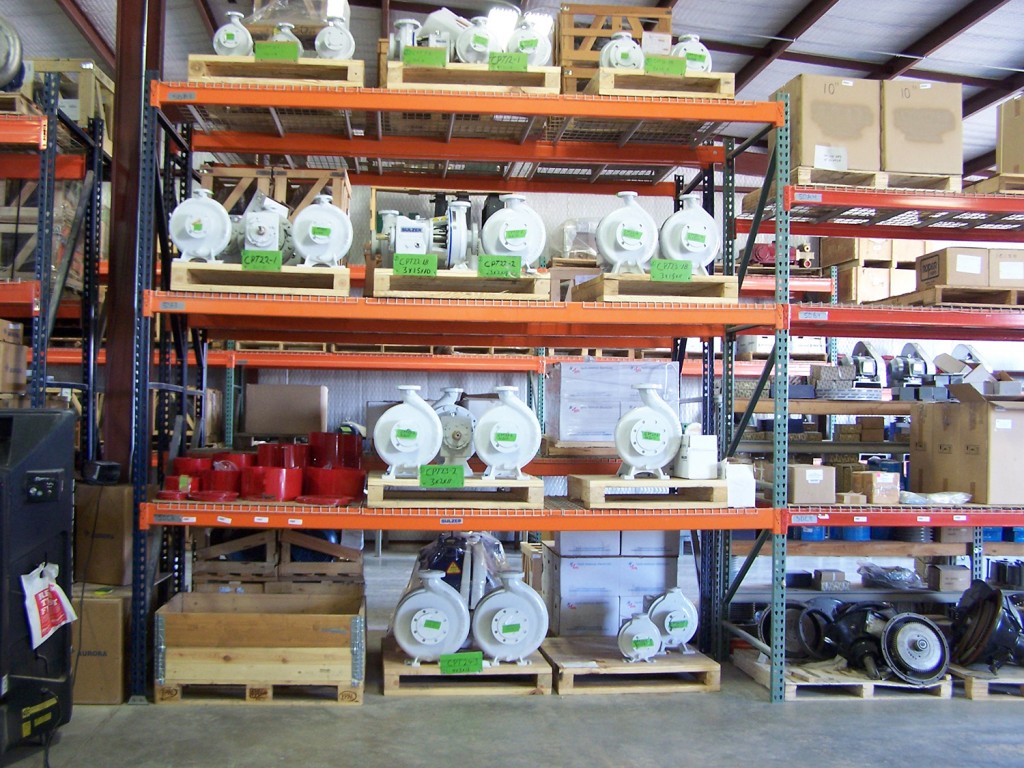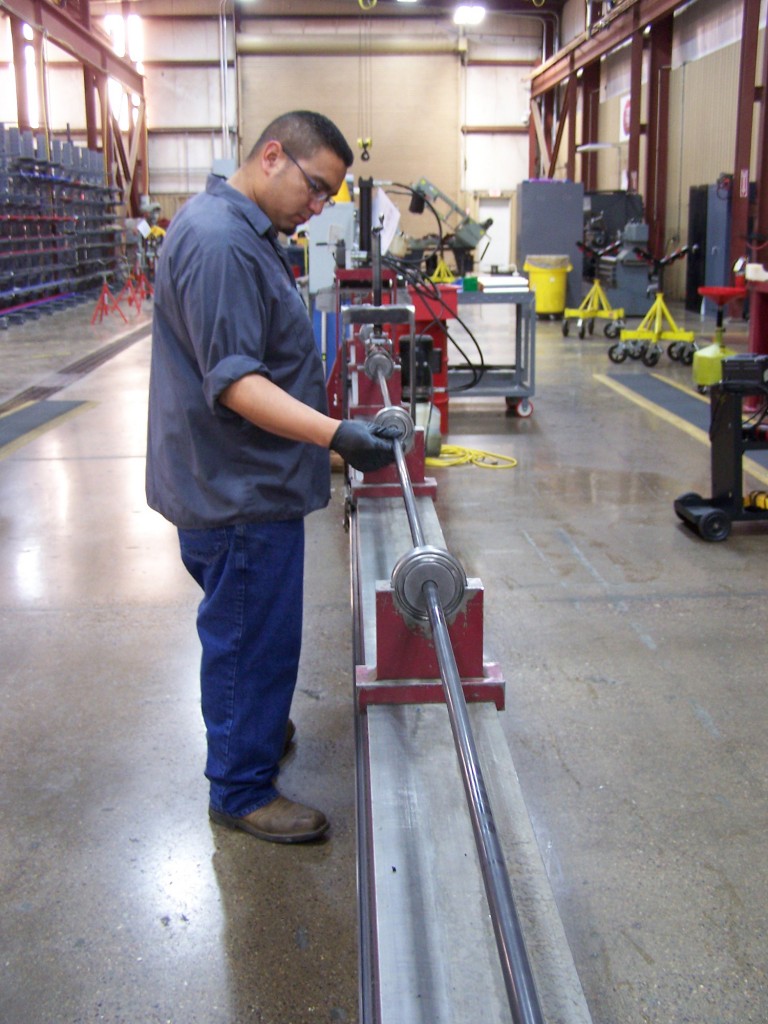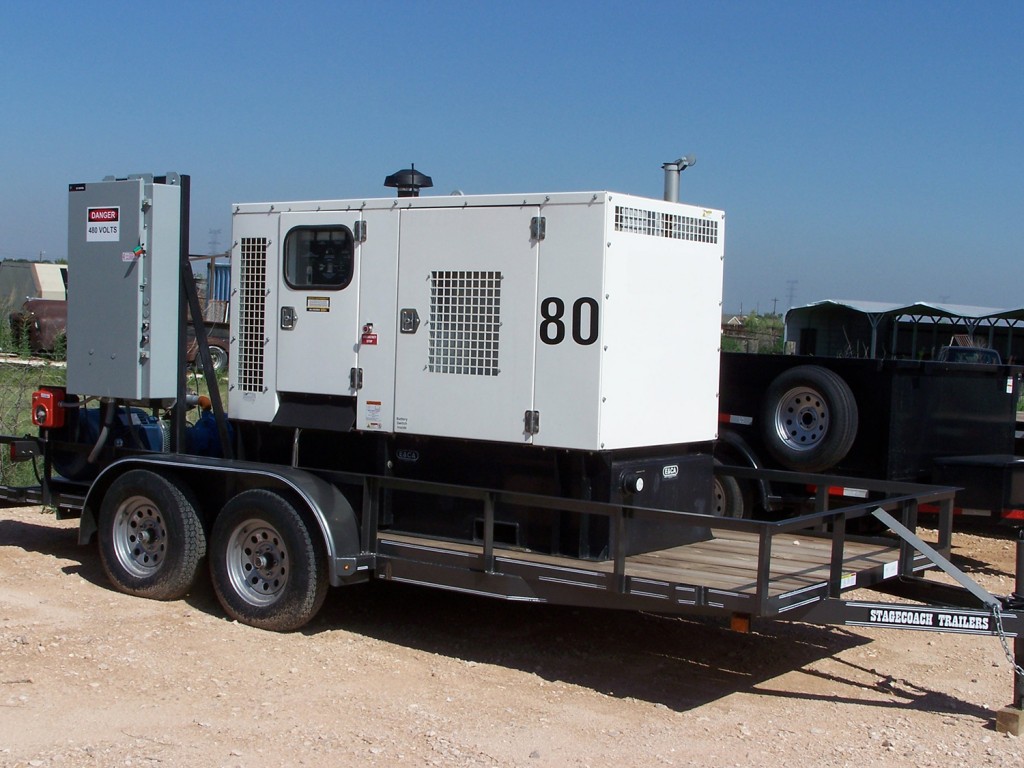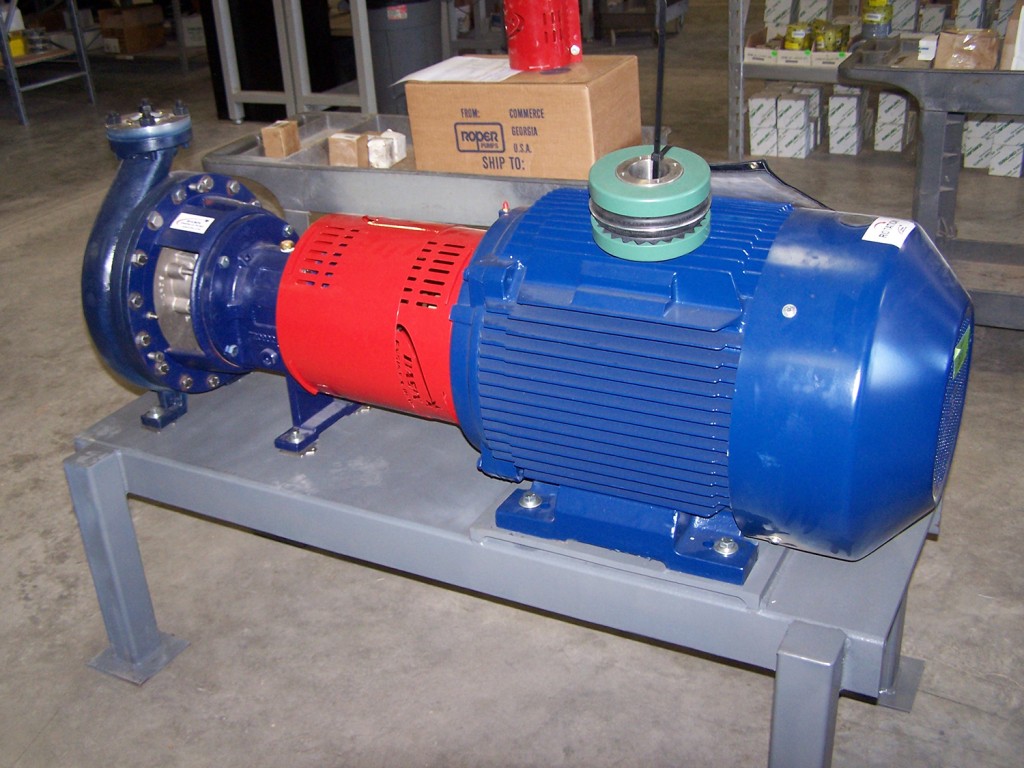Generating income, compressing challenges, and pumping profits in a downturn: reflections on the engines of the oil patch and how they’ve moved rivers of product.
By Paul Wiseman
The old business adage, “It takes money to make money” could be adapted for the oil patch as, “It takes energy to produce energy.” And to transport it. And process it. And deliver it to the consumer.
Companies who provide energy through generators, pumps, and compressors to get oil out and move it along are finding new ways to improve their prospects in this downturn. Many are diversifying their customer base, locations, or both and finding surprising success.
Branching out to other markets
Midland-based UltraQuip LLC sells, rents, and services light towers, generators, pumps, and other equipment, historically to the oil field. In fact, until about two years ago, says Jeff Somers, president of UltraQuip Holdings, Inc., they had little time to pursue anything but oilfield clientele.
“We just got so consumed over the last several years, in the oil and gas business, because it was so good,” Somers said. “And our customers demanded so much from us [that] it demanded all of our capital and more.
“Now that demand is not there, so we’re re-evaluating and deploying our equipment into other areas.”
One of UltraQuip’s first ventures was sort of a bridge move, putting in a location on San Antonio’s Loop 410. With the Eagle Ford shale play nearby, they can still service the oil industry as always. But when that’s slow, as it is now, they can rent much of the same equipment—particularly generators, light towers, and certain pumps—to the construction industry, agriculture, and anyone else who needs power and light where none is available.
Making it simple is the fact that it’s the same equipment they were already renting or selling to the oil patch. “Electricity is electricity, it just depends on how much is needed,” he pointed out.
Somers made the move based on both logic and necessity. “One of the reasons I did it was that I had several yards stacked full of generators and light towers—used and new—and I said, ‘Well, hell, they’re not doing me any good here in Midland, so I’ll take them somewhere else.’”
Convincing suppliers to let them reach new markets
Basin Engine and Pump General Manager Todd Ward used similar logic in looking to expand that company’s business. While they did not have equipment stacked, they had seen a drop in business among their producer-midstream client list, so they decided to compensate by adding new markets. Starting about two years ago, they began to seek pump customers among industrial water handlers and from municipal entities.
Surprisingly, the biggest challenge has come from pump and parts suppliers. “Some of the manufacturers will classify you as one thing, and they won’t sell you particular parts if you’re oil and gas only,” Ward stated. “So we’ve made inroads with some new manufacturers that we deal with and they’re a little more open-minded.”
Founded in 2004 and headquartered in the Greenwood community southeast of Midland, Basin Engine and Pump makes their own pumps and sells those of others. They manufacture the skids on which they mount engines and pumps. “Very little do we have to outsource,” Ward said.
Not only has the company maintained its employment level, Ward said they are doing some hiring. Beyond luck, Ward believes the reason they’ve been able to maintain their 45-person workforce can be found in their diversification efforts and the fact that Basin Engine and Pump still offers 24/7 service when it is truly needed.
While this company has expanded within its own geographical area, UltraQuip has very selectively grown into other markets across the west, in addition to San Antonio. A location in Stockton, Calif., recapitulates the San Antonio model, serving the oilfield but also reaching out to agriculture. The company recently made its first-ever sale of an engine to a vineyard. “That tells you where our diversity is going,” he said.
There is also a new location near Phoenix, from which basically no business will involve oil and gas.
To the uninitiated these moves may seem random, but Somers has a strong method behind it. “The areas we look at are based on the people that we hire,” he said. “We don’t necessarily target an area and then go see if we can find a guy. We find the guy, then we get comfortable with the area and we continue on from there.”
Getting help in reaching the world
A longtime basin maker of sucker rod pumps, Don-Nan Pump and Supply, has taken yet a different path to new markets. At the end of 2014, the company’s owner, Don Carruth, son of founder Vernon Carruth and the “Don” in the name, sold the firm to service giant Schlumberger. Don-Nan’s Marketing and Communications Manager, Tyler Fowler, said that the only change has been in how they pursue international markets. “[The buyout has] worked well. We’ve been able to maintain operations and pursue objectives based on internal decision making.” Carruth still serves as the company’s president.
One of the company’s selling points is that they are able to design pumps to meet specific downhole conditions. “We are using information on how long pumps operate and how well they perform in order to create newly designed parts,” Fowler said. “We’re making a real push with this data in order to make better recommendations to clients.” He added that Don-Nan’s willingness to listen to clients and make changes as appropriate has created additional customer loyalty.
The rise of gas-laden wells, which has pushed some producers to consider gas lift instead of rod pumping, has also pushed Don-Nan to revolutionize their pump designs. Their patented gas separator has also helped them compete for gassy wells.
One of the biggest challenges for rod pump companies lies in the fact that many fluid-rich wells do not require a rod pump for the first year or so, meaning that there will be some stress for a while even after drilling picks up again. This makes their decision to work under an international giant look better than ever.
Fowler said one of the main targets for international growth is just across the border in Mexico. “We are working closely with Schlumberger personnel in several countries in order to spur growth.”
One positive thing about the downturn is that hiring and keeping good workers is easier. “During the boom you might lose someone to another company for a 10-cent [per hour] raise. That’s not happening now.”
The company has added a wholesale warehouse in Ratliff City, Okla., and a retail operation in South Texas’s Eagle Ford shale, where they had a wholesale operation previously. They have had very minimal layoffs among their 350 employees, and have even expanded some departments, such as engineering.
Using technology to boost efficiency
“Back in the old days, I’m surprised we didn’t have people die in the desert,” said Freddie Walton, North America reliability manager for Tulsa-based Summit ESP. The “old days” meaning before GPS.
This young, growing company with a ten-acre sales, manufacturing, and service facility between Midland and Odessa is using technology and relentless quality control to manage costs and to continually improve their product.
Summit Vice President Mark Neinast elaborated on how the latest tech assists processes in many departments: “One of the things we’re not afraid to use is technology. All of our systems are interactive. Our invoicing talks to our order placement, talks to our field service—everything clicks, and everything just adds up to the point of where you actually get our invoicing.”
GPS on iPhones sends service technicians to the right well on the right road using customer-provided coordinates, making it even less likely anyone will die on the desert. Techs accept the job on their phone and follow the GPS to the location. Everything flows smoothly.
On the pumps and controllers themselves, Summit uses automation to monitor operations 24/7 from their Tulsa headquarters. They staff the monitoring room with degreed petroleum engineers. “They’re watching for alerts and alarms and trends, sending out daily reports to the account managers of what’s going on in their wells during the day before and the night before,” said Neinast. Account managers forward the information to the customer, especially when there is an alert or an exception.
Technology is also part of the manufacturing process. In the shop there are no paper instructions anywhere, instead posting only the most current version onscreen in kiosks located in each section.
“The individual has to go up to that kiosk and has to plug in what he’s making,” Neinast explained. And while the screen will show historical data, it highlights only the latest version of how to make the piece.
Known as Factory of the Future, the process has other controls. “Every order has a barcode on it,” said Dustin Lester, who is Summit’s operations manager, Southern Area, “so the individual in each area—whether it’s pump assembly, motor assembly—they don’t have to type in anything. They take a scanner and scan that barcode and [the kiosk] automatically pops up what they’re building.”
That’s when the kiosk screen pops up the current procedure.
Before long, through the scanning of the employee’s badge, the system will also verify whether the employee is trained and certified to build the system he has scanned. While Summit cross-trains its employees extensively—another efficiency measure—this would make sure that employees only build items they are qualified to build.
Summit has looked to unconventional wells, typically a problem for ESPs, for expansion, by designing pumps and systems that deal with the greater amounts of solids, gases, and other challenges presented by those wells, and are seeing success there.
Geographical expansion is also part of the plan for Summit. They have recently opened two Canadian offices: one in Edmonton and a sales office in Calgary. A brand new office has opened in Santa Clarita, Calif., between Bakersfield and Los Angeles.
Neinast stated that Summit is now the number two supplier of ESPs in Alaska based on two offices there; one in Kenai, the other at the base of the North Slope in a town named Dead Horse.
This expansion has come in spite of some difficult downward pressure in pricing due to the oil price slump. Summit has resisted the temptation to fire-sale their product at the cost of reduced quality, choosing instead to maintain their standards even if it cost them certain customers in the short term. While they did drop prices somewhat, it was only in relation to the amount of overhead they could reasonably cut without hurting the products themselves.
This has allowed them to remain a large supplier for two of the largest majors in the Basin, Neinast stated.
“The market’s taken two directions,” he said, speaking in reference to unconventional production. “Some customers have determined that the best way to go is to just get the cheapest product. If it’s going [to] fail in the short-term anyway, just put the cheapest thing in there you can. Those customers, with time, actually began to turn away from ESP applications,” moving instead toward the less expensive gas lift.
On the other hand, “Some companies have asked for the improved products—some developed right here.” Summit’s Permian Basin facility developed a high-flow gas separator based on their observations of pumps returned from the field. Neinast said field applications of the separator are running very well.
These four companies are among those who have found creative ways to not only stay in business but to update procedures and expand markets in ways that should be of benefit whenever oil prices rise to the point of creating a new drilling boom. The saying, “What doesn’t kill you makes you stronger,” would seem to be fully on display here.
Paul Wiseman is a freelance writer in Midland, Texas.













